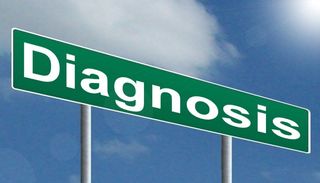Psychopathy
Moving Forward With Psychopathy
Psychopathy in 2020 and beyond.
Posted January 3, 2020 Reviewed by Jessica Schrader

If we mark Hervey Cleckley’s Mask of Sanity, first published in 1941, then the scientific study of psychopathy has now reached its 79th year. Much has been discovered in this time about the now-infamous personality disorder. Diagnostic criteria, such as the Psychopathy Checklist-Revised and the Psychopathy Personality Inventory, have been developed and used to determine psychopathic personalities, and this has been further borne out by a variety of brain scans elucidating differences.
Yet, in spite of these advances, questions abound surrounding treatment and prevention.
This might have something to do with the uniqueness of psychopathy. A diagnosis of psychopathy has traditionally been determined in a prison or detention center environment, but more to inform the relevant authorities about the nature of the person in question, rather than to inform the person being diagnosed.
It is not clear what a psychopath would make of their diagnosis; like other personality disorders, they might simply be seen as labels for other people to use, rather than being inherently useful for the person in question. Other diagnoses impart useful information that can be used to modify and control one’s life; a cancer diagnosis is usually followed by a prognosis, and the patient is told what the treatment options are, and what to expect with regards to the quality of life and life expectancy.
However, mental illness and disorder are not as easily accepted. Disease and disorder in the rest of the body tend to be viewed as other, and therapy is pursued to diminish it or decrease its impact. Mental disorder and illness are intimately and perhaps inextricably linked to personality and how a person has come to know themselves. Accepting others in this context is a challenge to personality and sense of self; after all, if you have developed a psychopathic pathology through childhood and into your adult years, your experience is unlikely to feel like another is present. Why, then, should you accept the diagnosis and be told that something is different (or wrong) about you?
Does a diagnosis of psychopathy mean anything to a psychopath?
If accepting the diagnosis, at least as a token gesture, meant more lenient treatment by legal or criminal justice authorities, it could inspire a degree of meaningful change. It is not uncommon for detained psychopaths to behave well in order to convince the authorities of fundamental change and convince them that they no longer engage in antisocial behavior. Caldwell et al. (2006) found that adolescents with psychopathic traits, when held in a detention facility that had more mental health professionals per detainee and did not use severe punitive measures to punish bad behavior (this was believed to enable and reinforce bad behavior), demonstrably had a reduced rate of recidivism.
Accepting the diagnosis in these situations could be useful whether the psychopath truly believes it or not if it means better and more social behavior in the short term—but of course, if the impulse for antisocial behavior is still present, the psychopath could simply be finding other ways to express bad behavior in an unsupervised setting.
A true acceptance of psychopathy could be a first step in treating psychopathy, and one way to achieve this could be to inform the newly diagnosed psychopath of a statistically-likely shortened lifespan. Vaurio et al. (2018) recently found that those diagnosed with psychopathic personality are likely to die younger than the non-psychopathic personality, all else being equal. This could be because psychopaths typically engage in riskier behaviors; alcoholism and drug addiction are often comorbid with psychopathy, and risky behaviors such as a penchant for speeding are often reported.
Would knowledge of decreased mortality encourage a meaningful lifestyle change for a psychopath? Whether it does or does not, are we not morally obliged to build upon this crucial study by Vaurio et al. and inform a newly diagnosed psychopath of this risk?
There is clearly a diversity within psychopathy, which is perhaps overlooked. The diagnostic criteria, particularly the PCL-R, are often criticized for overgeneralizing and losing the intricacies and nuances of who the person is. Even though psychopaths make up a small minority of the population, they are not all criminals, and it would be folly to think that a lack of empathy or conscience automatically triggers sadistic behavior. Psychopaths are stigmatized as monsters, and like all other stigmas surrounding mental health, taking steps forward requires us to challenge and overcome these stigmas.
Popular culture could actually help to play a role here. Even though it is popular culture that traditionally reinforces psychopaths to be killers (most notably the movie Psycho), authors and filmmakers could do many different things with a character who is emotionally blunted and has varying antisocial tendencies. Art gives humanity depth in a way that science and medicine can often miss, and so could be the answer to breaking this stigma. Given the current view of psychopathy, it is not an embraceable diagnosis.
One wonders if this stigma was broken, how psychopathy research would change. Humanizing psychopaths seems integral for progress and could stop psychopathy research from being one-directional.
Jack Pemment, © 2020.
References
Caldwell, M., Skeem, J., Salekin, R., & Van Rybroek, G. (2006). Treatment response of adolescent offenders with psychopathy features: A 2-year follow-up. Criminal Justice and Behavior, 33(5), 571-596.
Vaurio, O., Repo‐Tiihonen, E., Kautiainen, H., & Tiihonen, J. (2018). Psychopathy and mortality. Journal of forensic sciences, 63(2), 474-477.




